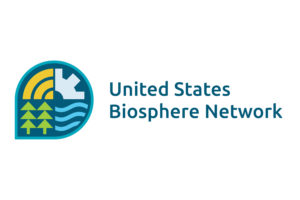Cascade Head Biosphere Collaborative Celebrates ‘Interdependence Day’ with Art on the Beach
The Cascade Head Biosphere Collaborative and its partners Lincoln City and the Confederated Tribes of Siletz Indians celebrated July 4, 2023 with a giant, 100-yard-long “Interdependence Day” themed sand graphic along the shores of the Cascade Head Biosphere Region and Marine Reserve to connect biosphere region residents and visitors with the sea and how it sustains life. Twenty-five volunteer rakers helped create the graphic depicting a giant pacific octopus holding four glass floats in its arms with messages about our connection with the sea scribed on the sands in front of the Chinook Winds Casino Resort in Lincoln City, Oregon.



